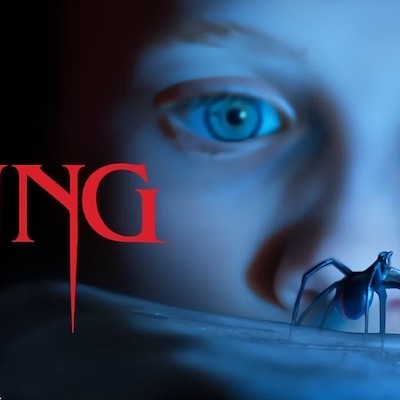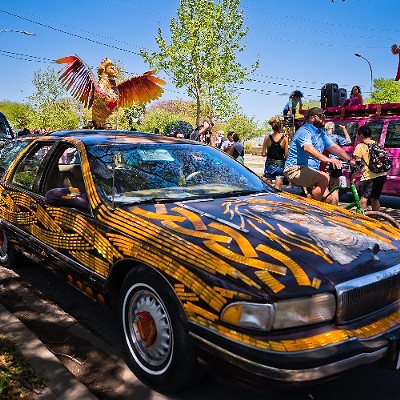Support Us
Houston's independent source of
local news and culture
account
- Welcome,
Insider - Login
- My Account
- My Newsletters
- Contribute
- Contact Us
- Sign out
[
{
"name": "Related Stories / Support Us Combo",
"component": "11591218",
"insertPoint": "4",
"requiredCountToDisplay": "4"
},{
"name": "Air - Billboard - Inline Content",
"component": "11591214",
"insertPoint": "2/3",
"requiredCountToDisplay": "7"
},{
"name": "R1 - Beta - Mobile Only",
"component": "12287027",
"insertPoint": "8",
"requiredCountToDisplay": "8"
},{
"name": "Air - MediumRectangle - Inline Content - Mobile Display Size 2",
"component": "11591215",
"insertPoint": "12",
"requiredCountToDisplay": "12"
},{
"name": "Air - MediumRectangle - Inline Content - Mobile Display Size 2",
"component": "11591215",
"insertPoint": "4th",
"startingPoint": "16",
"requiredCountToDisplay": "12"
}
,{
"name": "RevContent - In Article",
"component": "12527128",
"insertPoint": "3/5",
"requiredCountToDisplay": "5"
}
]
Our world is an interesting place, and for many people there is a drive to form social groups outside of the mainstream. Over the past several decades, many subcultures have formed that initially weren't very noticeable to the average person, but in an era in which the Internet provides a way for people to communicate in ways never before possible, many of those subcultures have grown and become huge. Here are a few of the more notable examples.
6. Juggalos
Juggalos get a lot of exposure these days, and have roots going back to at least the early '90s. They are the extreme fans of the Insane Clown Posse, a hip-hop group from Detroit that got its start in 1989. The music of I.C.P. has never been about subtlety, and the group consists of two guys wearing clown makeup who pen songs about drugs, murder and...magnets, among other subjects. As the years went on, some of their fans began to wear clown makeup, too, and eventually created a huge subculture of Juggalos. Many of these clown-faced fans make a lifestyle out of their affiliation with their Juggalo family, with its biggest celebration being the yearly "Gathering of the Juggalos," an enormous celebratory, and infamously lawless, music festival that I.C.P puts on in Ohio. The (very NSFW) infomercials advertising this event give outsiders a view into Juggalo life, and are well worth a look. The FBI currently considers Juggalos to be an outlaw gang, which doesn't seem particularly fair since it's rare to hear of any significant violence or criminal activity attributed to them. Yes, drug use is celebrated, but the FBI doesn't consider other groups of music fans, such as Deadheads, to be criminal gangs. Juggalos often look scary in their makeup, but they seem mostly harmless. As mentioned, the following video is not safe for work or sensitive viewers.
5. Real Vampires
Real Vampires are people who believe they must feed on the blood or psychic energy of other humans in order to preserve their mental, emotional or physical well-being. They're another group that's gotten a lot of exposure in the media recently, and their numbers have been steadily growing over the past three decades or so. Like many younger subcultures, these real-life vampires network with each other online, using social networking sites and specialty forums to exchange ideas and socialize. They also host and attend vampire-centric events and meet in private to perform vampiric acts out of the public eye. Vampires have a very developed social order and usually follow a strict moral code that holds safety and consent as paramount concerns. The following video contains material that might offend sensitive viewers.
4. Otherkin
Otherkin are a subculture of people that developed almost entirely online, made up of folks who identify as either partially or entirely non-human. They explain the mechanisms behind this state of being in a variety of metaphysical ways, and Otherkin are relatively "rules-free" in nature. Some claim to be fairies or elves, dragons, cartoon characters or other mythical creatures, and may claim to possess abilities or vulnerabilities attributed to their mythological kindred.
As difficult as it may be for outsiders to understand or accept, many Otherkin take their beliefs quite seriously, and some develop elaborate spiritual belief systems around their identities. Although Otherkin are generally less socially structured, they have certain similarities to Real Vampires, and the subcultures sometimes interact with one another. Since their beliefs are very unconventional, Otherkin are often harassed online by people who think they are delusional. I'm not sure it's advisable to screw with a person who is part dragon, and maybe it's best to just live and let live anyway.
3. Fan Fic Communities
Fan fiction has been around in one form or another for decades, but has become enormous with the widespread adoption of online communities. Fan fiction at its most basic is a kind of tribute. It's when people who are fans of a particular TV show, movie or group of characters decide to write their own stories using their favorite characters or the fictional worlds in which they exist. It's a creative hobby for many people, and there are probably thousands of individuals who take part in it. Where a hobby becomes a subculture is when it grows in scale and dedication. There are people who group closely together and form tight bonds through their mutual obsession with fan fiction.
Some fan fiction communities also have a sizable number of contributors who focus on interpersonal and romantic or sexual relationships between fictional characters from the fandom they enjoy. In fact, 50 Shades of Grey had its origins as a series of terrible, sexually explicit fan fiction stories using characters from Twilight. Let that sink in for a moment. Despite that "live and let live" thing I mentioned earlier, if a person enjoys writing sexually explicit fan fic using underage characters, please knock it off. The Internet is already gross and scary enough.
2. Furries
The Furry Fandom is another subculture that goes back decades, having been recognized in science fiction and fantasy circles by the early '80s. However, many people will trace its origins further back to anthropomorphic depictions of animals in cartoons decades earlier. Furries are individuals who are interested in fictional anthropomorphic animal characters with human personalities and characteristics.
One thing is for sure — the Furry subculture is huge now, helped along by the Internet by the early '90s and having only gained steam since then. Individual Furries are attracted to the subculture for many different reasons, and their interests are varied. Some Furries are interested only in enjoying media using characters who fit the Furry profile, and others like to build elaborate costumes to wear and socialize in with other Furries. A sizable segment of the Furry Fandom subculture also promote a sexual element to their activities, but while that sexual content is often criticized, it's not representative of every Furry. A few people in the subculture also cross over into Otherkin territory, believing that their anthropomorphic alter ego better reflects their true nature than the physical human body they inhabit.
1. Bronies
I remember the first time I heard about Bronies — male fans of "My Little Pony" who tend to range in age from teens to middle-aged men. My first impression was "Thank you, Internet, for unleashing another horrifying sexual fetish upon our world." Then I met a couple of Bronies in their twenties, and while they were a little odd, neither seemed like a really creepy person. A couple of documentaries later, and I've come to understand the Brony subculture a little better. It seems to attract men who like the central theme of friendship and loyalty that the cartoon show My Little Pony: Friendship Is Magic spreads. Bronies seem to interact mostly online, but also attend local social gatherings and meet-ups, and travel great distances to go to large conventions celebrating the show. Rather than being a creepy group of sexual predators or perverts, Bronies seem to be a community of teens and men who rally around positive messages from My Little Pony. Like most of the groups on this list, they may appear weird or even frightening to outsiders, but are just forming communities around shared interests that are outside of what many people would consider the mainstream.
KEEP THE HOUSTON PRESS FREE...
Since we started the Houston Press, it has been defined as the free, independent voice of Houston, and we'd like to keep it that way. With local media under siege, it's more important than ever for us to rally support behind funding our local journalism. You can help by participating in our "I Support" program, allowing us to keep offering readers access to our incisive coverage of local news, food and culture with no paywalls.
Trending Arts & Culture
- Opinion: Jack Sparrow Was Never the Main Character
- Using Flashbacks and Direct Quotes From the Classic Book, Alley Theatre Presents Jane Eyre
- In its Own Sexist Way, The Taming of the Shrew at Classical Theatre is Funny
-
Sponsored Content From: [%sponsoredBy%]
[%title%]

Don't Miss Out
SIGN UP for the latest
arts & culture
news, free stuff and more!
Become a member to support the independent voice of Houston
and help keep the future of the Houston Press FREE
Use of this website constitutes acceptance of our
terms of use,
our cookies policy, and our
privacy policy
The Houston Press may earn a portion of sales from products & services purchased through links on our site from our
affiliate partners.
©2024
Houston Press, LP. All rights reserved.




